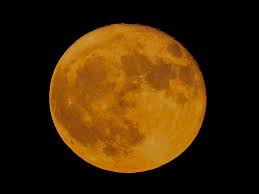There is a lot going on in the sky this month. Not only do we have two full moons in August, but both of them are supermoons. Oh and there's a meteor shower.
There are actually four supermoons in a row this year, a very unusual occurrence. The first one, coming Tuesday, August 1, is the second in the series. The August full moon is called the "Sturgeon Moon."
At the end of the month, we'll see another supermoon, this one a "Blue Moon."
Meanwhile, the Perseids meteor shower is going on, from July 14 to September 1. The peak nights to watch will be August 12-13.
A perigean full moon, better known as a supermoon, happens when the moon is full during the closest point in its orbit around Earth. This gives its appearance an extra pop, making it look up to 8% bigger and 16% brighter than a typical full moon, according to The Old Farmer's Almanac.
According to NASA, the moon's typical orbit ranges between 226,000 and 251,000 miles from Earth, but variances can bring it a bit closer or farther away. Only the closest three or four approaches each year qualify as supermoons. The last one was on July 3.
The moon will be even closer the night of Aug. 30 -- a scant 222,043 miles (357,344 kilometers) distant. Because it's the second full moon in the same month, it will be what's called a blue moon.
"Warm summer nights are the ideal time to watch the full moon rise in the eastern sky within minutes of sunset. And it happens twice in August," said retired NASA astrophysicist Fred Espenak, dubbed Mr. Eclipse for his eclipse-chasing expertise.
In order to take an amazing image of the moon you really need a telephoto or zoom lens – the longer the better. As well as a professional camera and a tripod, also use a cable release or your two-second delay timer to release the shutter. This prevents camera shake when hitting the button. It allows you to not only increase the size of the moon in the frame but to get all the detail within it while keeping the image as sharp as possible.
Sometimes, several lunar phenomenon line up on the same night to create a truly extraordinary sky-watching experience, such as on January 31, 2018, when the last full moon of the month was not only a blue moon and a supermoon — it was also a blood moon, or a total lunar eclipse. Those events occur when Earth’s shadow gives the full moon a reddish tint.
Read more
The star Angus Cloud died at 25 Flamboyant wrestler Adrian Street dies at 82Sarah H
Also on site :
- Beloved 'SNL' Star Offers Cryptic Comment Amid Casting Concerns
- Grammy-Winning Artist Cancels Big Appearance With 'Deepest Regrets'
- ‘Murder cult leader’ behind alleged neo-Nazi plot to poison students at Brooklyn Jewish schools extradited to US following arrest in Moldova

